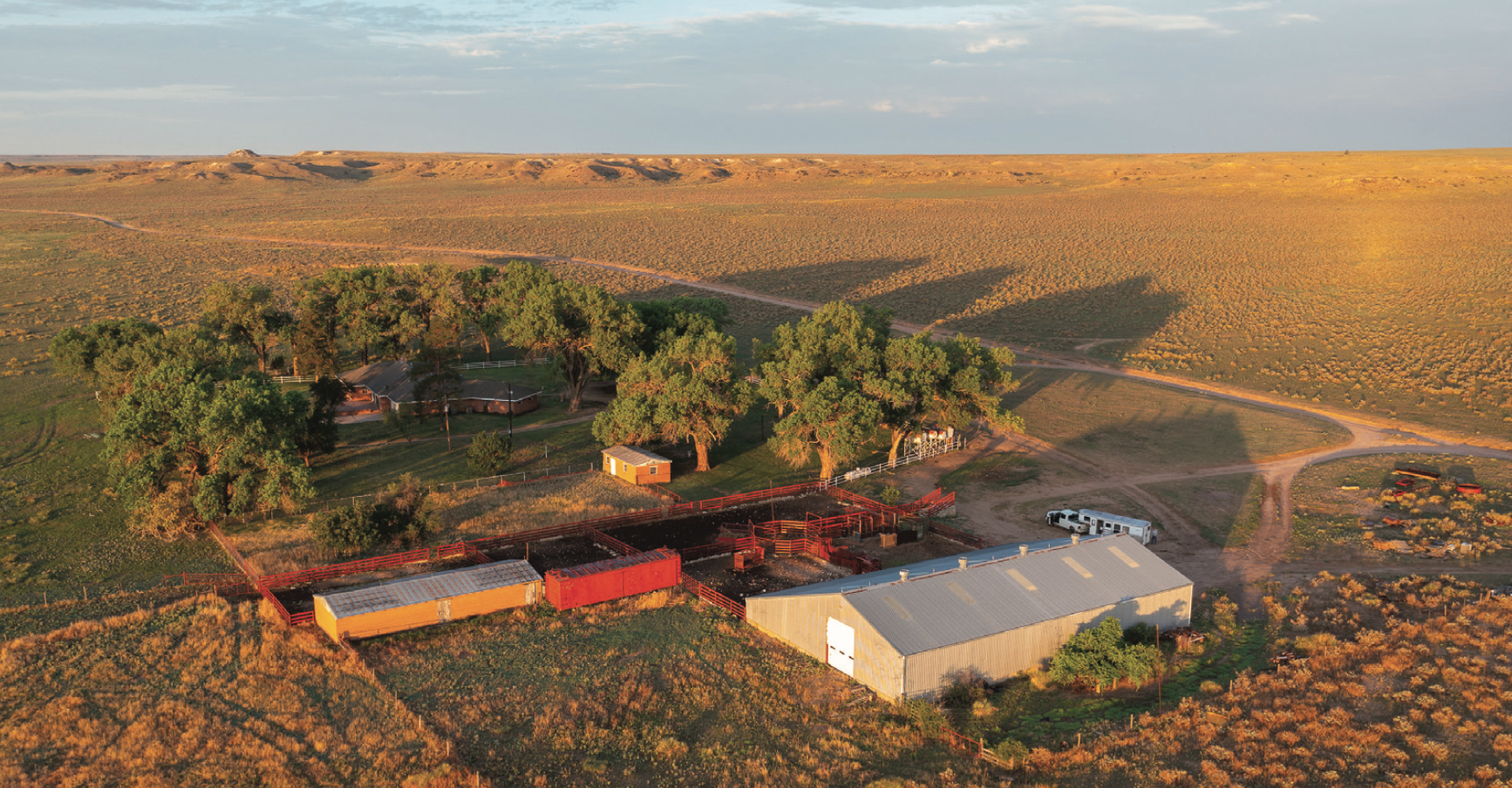By Kate Bradley Byars
THE XIT RANCH SEEMS LIKE A LONG-LOST LEGEND, BUT UNDER FAMILY MEMBER DREW KNOWLES’ VISION, THE HISTORIC TEXAS RANCH IS MAKING A COMEBACK.
Looking south over the XIT Ranch horse headquarters in Colorado, the Sangre De Cristo Mountains reach into the blue sky, not the sweeping West Texas plains you might expect from the historic ranch’s history. Now split be- tween two headquarters — cattle in Texas and horses in Colorado — Drew Knowles is working to re-build and rebrand his family’s historic XIT Ranch for the modern age.
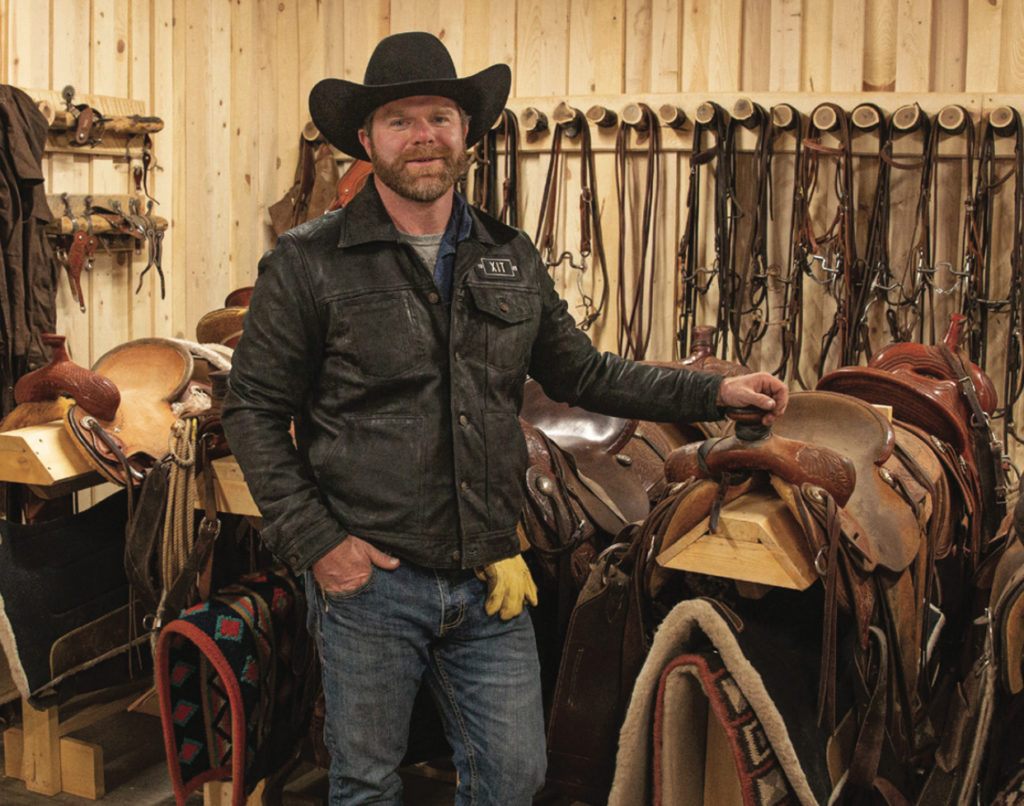
The original XIT Ranch was a result of one of the largest land swaps in history, when the Farwell brothers took 3 million acres of land in exchange for building a new Texas state capitol building in Austin. From Chicago, Illinois, John and Charles Farwell put together the exchange, then ran the XIT Ranch from 1885 to 1912. The family continued to lease its holdings un- til 1963 when they sold the last parcel.
Out of the pages of history, the XIT is rejoining the ranching industry, led by Knowles, John Farwell’s three times great-grandson. But this time, the ranch is stocked with grass-fed Angus and American
ican Wagyu, not the Longhorn and Here- ford cattle of the ranch’s past.
And, instead of encompassing 10 coun- ties in Texas, or “X-I-T,” (Roman numeral “X” for 10, “I” for in, “T” for Texas) as legend holds, the once largest ranch un- der fence is now compiled of land hold- ings in La Veta, Colorado, and as of June 2022, near Channing, Texas, where to- day’s XIT will once again have its head- quarters, located in the original ranch’s Rita Blanca division.
If you want to read about the ranch’s history, there are more books on the XIT Ranch than can fill a library shelf. For Knowles, it’s the future that he wants to focus on.
“I always had a big passion for the outdoors, and my mother always says that I wasn’t meant to live in Ohio,” says Knowles, 41 years old. “I view myself as a steward, and my job is to do the best I can while it’s my turn. What that means today is to continue the legacy and to continue to share the traditions.”
For a kid raised in Cincinnati, Ohio, to shift from money management to ranch management is a big leap of faith. Knowles took the leap to pursue his dream of pre- serving his family’s heritage and has found it more than worth the risk.
Today, the XIT Ranch runs different cattle than what was pictured in black and white photos, and the Quarter Horses that once only worked the ranch now also make waves in the performance arena. Yet Knowles’ goal is eerily like his forefathers, the Farwell brothers — he wants to create a sustainable ranching business benefit- ting not only his family but others.
LOOKING BACK TO GO FORWARD
Growing up in Ohio, Knowles wasn’t aware of his family’s storied Texas past until he was 11 years old. He spent a lot of time in the woods surrounding his home, always feeling a pull to be out on the land. An allergy to horses kept him from riding,
but the Western cowboy lifestyle caught his attention.
“My family is very proud of our history, but it was always something we did a long time ago,” Knowles says. “It wasn’t some- thing discussed in the present sense. My paternal grandmother is my connection to the ranch, Marcia Tuttle Knowles. She is very proud of [our history]. My father and I used to come out to Wyoming to big game hunt, and I always dreamed of the American West, of being a cowboy. At a younger age I didn’t necessarily know what I was going to do with my life, but the idea of a big ranch always intrigued me.”
Knowles went to the University of Colorado at Boulder and received a degree in philosophy, then graduated with a master’s in business administration. His father, Harvey Knowles III, worked for Merrill Lynch; he eventually followed his father into money management. He moved back to Cincinnati in 2006 after his now wife, Abby, completed training at the Le Cordon Bleu in Portland, Oregon. By 2011, Knowles had left Merrill Lynch to start his own money management firm, and returned to Boulder, Colorado.
“I felt drawn to start exploring other things and we were looking at ranches, and I started to become fascinated with land as an asset class and commodity-linked business,” Knowles says. “I started learning everything I could about running a ranch- ing operation and what the modern-day ranch looks like compared to what they were 150 years ago.
“The old days of just being a cow-calf operation don’t work anymore; you need to have five or six different lines of busi- ness that are bringing in revenue in or- der to have enough cash flow to support everything.”
With full support from his wife, whom Knowles credits with the way the ranch is operated today due to her interest in the Savory Institute and mindful land prac- tices, they purchased land in La Veta, Col- orado, in 2020 and eventually moved there with daughters Dyer and Emeret.
It became clear to Knowles his family’s historic connection with ranching was go- ing to not dictate his path but inspire it.
“I think there are a lot of people who have been so excited about what we’re do- ing,” Knowles says. “I wanted to breathe life back into the XIT and to tell that story, but there was this moment where we weren’t exactly sure how to go about it.
“It was just this thing that my family did and we were proud of but, not living in Texas, we didn’t fully understand the gravity of what it meant to people in Texas — what that history meant,” he continues. “We visited the Texas Capitol [building] in 2019, and the more time I spent in Texas, the more I started to figure it out, and I said to Abby that we must honor the [ranch’s] legacy more than anything else. It has to be about the history and the tradition.”
RAISING UP A RANCH
First and foremost, the Knowles knew that ranching included horses. But this formerly urban family needed guidance in that area, not only on building a herd but in proper horsemanship. Enter: Ben Lard, a horseman based in southern Colo- rado who started giving the Knowles fam- ily riding lessons in January 2021. Today, he manages the XIT equine program and assists with cattle operations.
“Ben’s style of natural horsemanship really spoke to us,” Knowles says. “And it was really great to work with him early on as we were really kind of figuring out what we wanted to do, such as preparing to work cattle from a saddle. Ben deserves a lot of credit for guiding us and keeping us safe, our horses safe and everything along the way.”
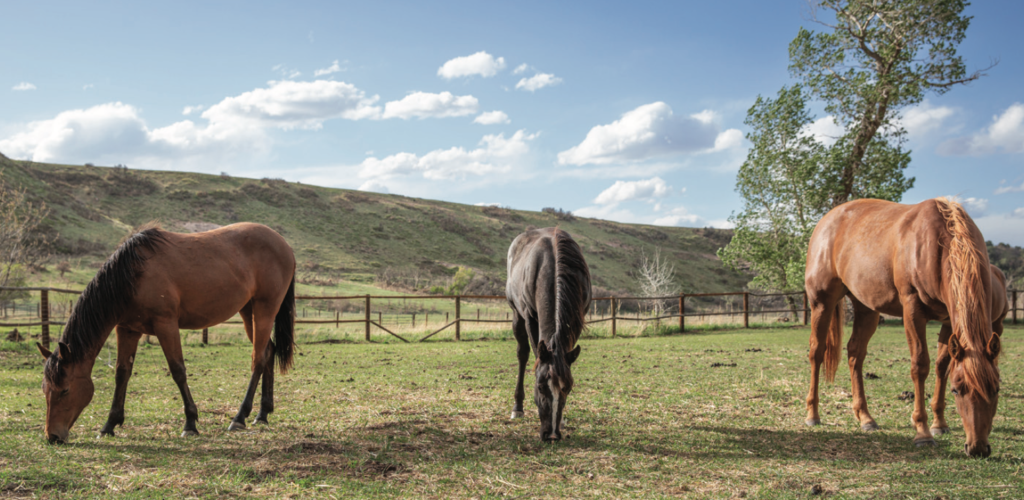
For Lard, 34, from Phoenix, Arizona, a cutting horse background had led him to reined cow horses, and eventually to the root of that industry, ranching. Prior to joining the XIT full time in 2021, he worked for a decade breeding horses, start- ing colts and guiding hunts and pack trips in the mountains for the Bar NI Ranch in Stonewall, Colorado.
He and Knowles put their heads to- gether to begin building a horse program that would complement the cattle opera- tion but also add another line of revenue, which Knowles knew would be import- ant. But foremost, the horses had to assist in the ranch’s primary goal of raising beef.
“Our goal is to raise grass-fed beef, right now,” Lard explains. “We are looking at overall land management to ensure we can run cattle and still have wildlife because we don’t want to simply use up the ground.”
The smaller, shorthorn black Wagyu bulls are eye catching with the large “XIT” brand on their right ribcages as they move across the rolling plains in Texas. They are not the hulking, 2,000-pound Herefords seen in the old-time images depicting cat- tle gathered to ship by rail from the Texas Panhandle. However, their meat is even more sought after.
Combining Abby’s knowledge of the food industry with sustainable ranch practices has shaped how the XIT raises cattle and markets its beef.
“We really are mindful about how the land management decisions we make impact the land for our animals and what that means to our consumers,” Knowles says. “We’re in the Savory Institute’s Land to Market Program.
“The first land to market restaurant is a Spanish steakhouse, Corrida, out of Boul- der,” Knowles continues. “We have been selling beef to them. Now, we’re starting to work on multi-year plans with them to supply them with American Wagyu that’d be grain-finished on pasture.”
In setting up a supply chain that features more direct-to-consumer practices, the Knowleses are not retracing the steps made famous by the Farwells, who put railway lines into the Texas Panhandle to ship cattle north to processing plants. Instead, they are forging their own path more aligned with their beliefs.
“This journey that we’ve been on is in- credibly rewarding and it’s great to have something that our entire family is involved with,” Knowles says. “During branding, younger kids are out there run- ning around playing, Dyer is helping with the vaccine gun, I’m branding and Abby is doing the castration with a knife, so we’re all there – we’re all doing it.
“To see the development of my girls and their confidence through working with the animals and the land — they have thrived living in this environment.”
STARTING NEW VENTURES
Steeped in tradition but with an eye for the future, the XIT Ranch is building a herd of ranch raised, working horses that are also aimed at versatility ranch horse and working cow horse events. Originally, Knowles and Lard put their heads together to buy dependable geldings, but their shared vi- sion on the ideal ranch horse led to the ranch’s current path — purchasing and breeding its own horses.
“We want horses that are sound to work for a long time. And we’re not looking at horses retiring at 6 or 7 years old,” Lard says of the horse program’s goal. “We purchased two horses but they weren’t the caliber we wanted to aim at; we wanted really nice ranch horses. Drew decided that we’d start breeding horses to make sure we could have the horse we needed.”
In the fall of 2021, the ranch purchased multiple horses at the Return to the Remuda Sale, including mares bred and raised on the King Ranch in Kingsville, Texas, on theFour Sixes Ranch in Guthrie, Texas, and on the Beggs Cattle Company in Post, Texas. Lard and Knowles have also allied with two trainers well versed in both a ranch’s horse needs and the kind of horse it takes to win in the performance horse arena — Ben Baldus and Matt Koch.
Baldus, who trains out of Gainesville, Texas, shows XIT-owned Play Rey Sugar Baby in National Reined Cow Horse Asso- ciation events and has other young pros- pects in his program. Koch, from Elizabeth, Colorado, sold the great bridle mare Smart Ladies Sparkle to the Knowles and also competes on ranch-owned Smart Lookin Secrets in NRCHA events.
Knowles purchased Metallic Cat Rose, a red roan mare by the NRCHA all-time leading sire Metallic Cat, who was the 2020 NRCHA World’s Greatest Horseman Champion. They also purchased embryos from the 2021 World’s Greatest Horseman Champion, Gunna Be A Smartie. Added to the ranch-raised bloodlines he has in the Colorado pastures, Knowles now has an arsenal of mares with performance proven cow smarts to launch his two-pronged horse program.
“When it came to the horse program, I felt the best way for us to complement the ranch horses was to have a performance horse program as well,” Knowles says. “We felt any horse we breed should have a shot at the show pen. If it doesn’t make it, the best of the best, it’s going to make the best ranch horse around.
“We also felt in order to earn the reputation that we wanted to have, we needed to be in the performance horse world, specifically in reined cow horse,” Knowles continues. “The NRCHA honors vaquero horsemanship, which we think the world of, and [those training methods] create a horse that can go out there and do any- thing that it needs to do on the ranch, but can go compete at cow horse. We kind of look at that as a two-way street.”
As Knowles and Lard created a foun- dation herd, the ranch also invested in the industry. The XIT Ranch is a corpo- rate sponsor of the NRCHA and is adding money to the Taylor Sheridan-produced The Run For A Million that happens in August in Las Vegas, Nevada. In 2022, ranch hands had a chance to compete in the invitational for prize money with their reined cow horses because of the Knowleses’ support.
One of the ranch’s cornerstone mares, Smart Ladies Sparkle, qualified for the Cow Horse Challenge with Koch at The Run For A Million. It’s quite a different arena from the ranch in La Veta, where Koch brought the mare last spring to help brand the XIT calves.
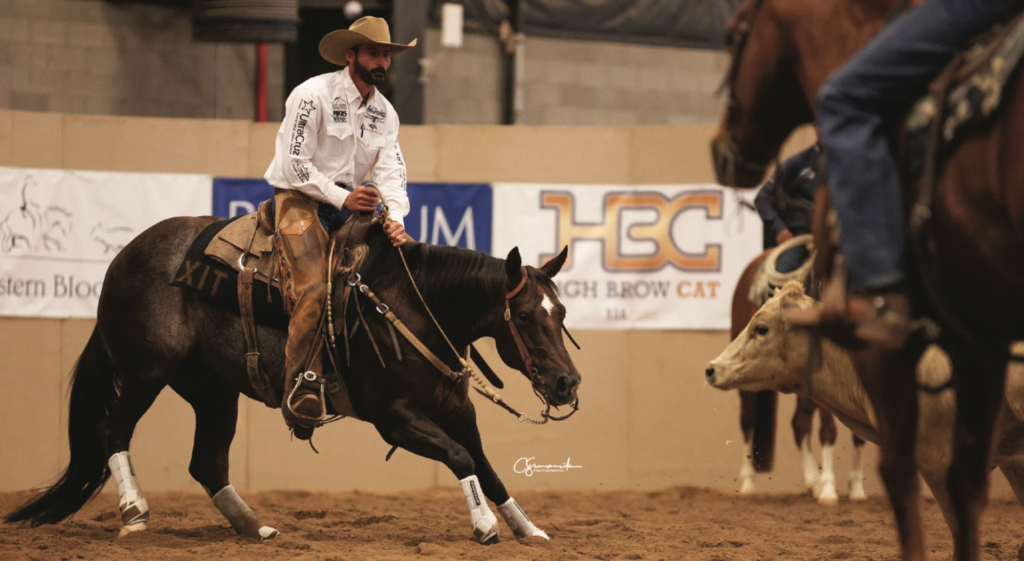
“Their support is putting the spotlight on ranches and the ranch cowboy, which means a lot to me because I started cow- boying before I got into this horse show deal,” Koch says. “Working for Haythorn and Wagonhound [ranches], I’d heard of the XIT but had no idea how big a part it had played in history.
“We feel extremely blessed to be part of the tradition of the ranch and see what the future brings,” Koch continues. “Drew has done his homework, his research and is not afraid to take advice. We all have the same thoughts on how to use these horses more traditionally.”
A barn full of talented horses will soon be ready to tackle the Spanish Peaks in Colorado, and to trot out across the Texas panhandle plains with the addition of new, old XIT-owned ground.
RECLAIMING RANCHLAND
One place where ranchlands haven’t succumbed to urban sprawl is Texas’ Panhandle. The Rita Blanca ground once tread by the original band of XIT broodmares, continued to be used to graze horses and cattle, even through changed ownership. The summer of 2022 saw that land welcome XIT-branded stock back to its rolling hills and the return of the famous brand’s head- quarters to Channing.
“It’s exciting to now own part of the [orig- inal] land 60 years later,” Knowles says. “We’ve been operating awhile in Colorado but got sideways glances when we said we are the ‘XIT.’
“We have a vision for a multi-ranch port- folio to mitigate drought risk, and we al- ways knew we were going to expand,” he continues. “When the opportunity to purchase what was the mare pasture [of the original ranch], we got our turn again on a piece of land that we used to have. Being able to headquarter the XIT Ranch in the Texas Panhandle, on originally owned fam- ily land, gives me goosebumps.”
There are several XIT-named products out there, from potatoes to clothing, that don’t necessarily have ties to the ranch. But in Dalhart, Texas, the XIT Museum invites people to learn about not only the famed ranch but about the ranching lifestyle from an authentic source. Former associates of the ranch also began the XIT Rodeo and Reunion, also in Dalhart, in 1937 and have since gathered to honor Western heritage through the event.
One thing Knowles is careful not to do is marry the family’s brand with a product that isn’t genuine or quality, whether that is beef, horses or anther venture down the road.
“I want to make sure that the horses we’re putting out, that the cattle we’re producing and how we are managing the land is genuine,” Lard says. “That’s Drew’s heart, and we’re not here to fake it until we make it. Everything we do is researched and planned. I think he probably is looking forward [to when he can] retire and just cowboy.”
That day might be farther down the road as the ranch grows its American Wagyu herd with cattle now grazing the Texas headquarters pastures, its horse program based in Colorado and increasing land holdings in the future. Knowles’ vision is pushing the young brand forward with a purpose.
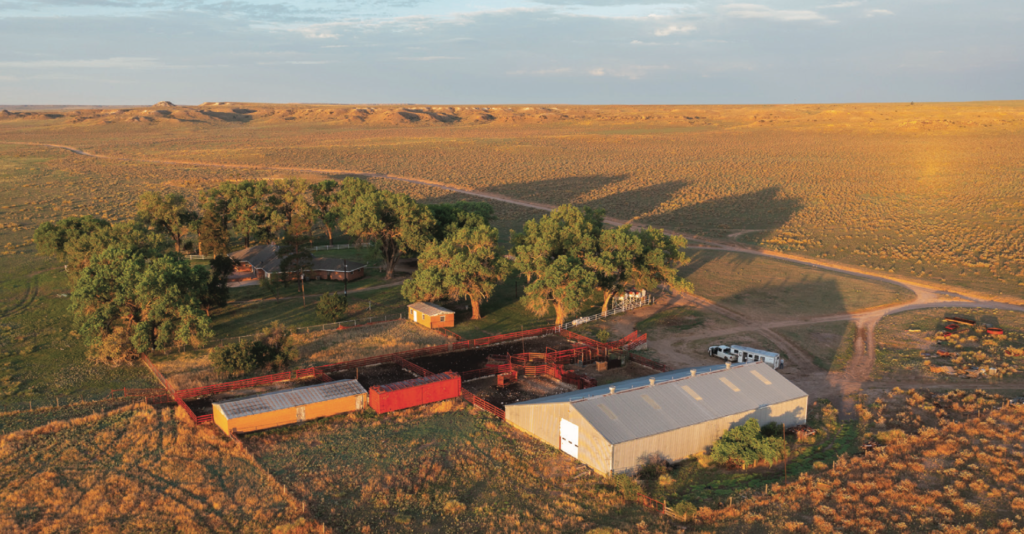
“I think the XIT’s history is a big part of our fabric as a country; it’s a testament to the fortitude it took to take the chance to move west and try to provide for yourself in this way,” Knowles says. “And it was through that hard work and determination that we became the country that we have become.
“A big part of what we’re trying to do with the XIT is to bridge the gap in between the history and what we’re doing today,” he continues. “And it’s telling that story — the rules of the ranch from 1885 are the same rules that our ranch has today.”
Knowles refers to the literal, original XIT Ranch Rules – 23 general ranch rules mod- estly updated in 1888, that now hangs in the guest lodging at the La Veta equine program headquarters. The rules establish a code, much like the cowboy code but with a savvy business mindset. It fits what Knowles is working to accomplish with his ranch.
“Protecting and caring for the legacy is the thing that I’m dedicated to doing with the time I have left on this earth,” Knowles says. “Today, I got to go move cattle and got to be horseback and it’s a ton of fun. I really enjoy it, but ultimately, I must run the business.
“It means the world to my family that this history is alive again, that there is new life in the XIT.”
_________________________
This article appears in the 10.22 issue of Western Horseman. Download a pdf here.


